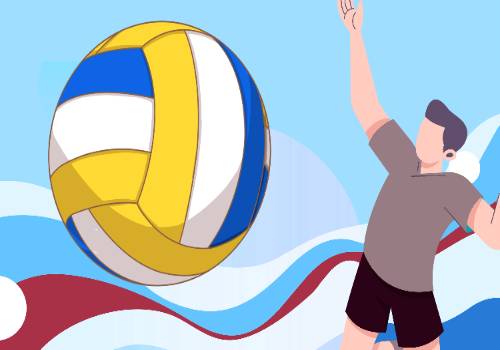In Chapter 7 of Purposeful Play, teachers explored the power of tapping into student interests. Our Early Years educators strive to understand students’ passions and interests in order to design meaningful and engaging learning experiences for our young learners. They challenge themselves to adopt a play mindset to cultivate empathy and help take students’ learning further through observation and questioning.
Our EY teachers adapt their versatile classrooms and materials to meet the needs and interests of students as they continue to learn and grow through play. Keep reading below for specific examples from our Early Years teachers.
How are student interests reflected in our Early Years classrooms?
 (資料圖)
(資料圖)
Student Interests in
K3
K3 students love experiencing the world with all their senses. Seeing, hearing, smelling, touching, and even tasting things create deep connections in their minds. Because they are so interested in the outdoors, we try to give students lots of opportunities to learn outside the classroom: balcony play, outdoor classroom play, and rooftop garden play.
Students Interests in
K4
Students created stories with their favorite characters. One student"s cat hopped into the other student"s car...and you can imagine what could happen in their shadow puppet show. It brought wonders for different light sources and the change of shadows as the light changed. Students interacted and exchanged their ideas, creating stories, developing communication and social skills, and integrating all their learning together in making their own stories. They all wanted to be performers. Again, their joy of play, passion, and interests posed the problems, and they solved their issues on their own. Their creativity creates new worlds and integrates all their learning together to make their own stories.
Student Interests in
K5
K5 students are immersed in the simplicity of unstructured play offering an environment that allows them to choose, making their own –creating space where they feel valued and find ownership. They are building using 3D shapes - magnetic sets, exploring sea animals in our water table, and reading books they chose and are interested in. They are playing and learning together!
Student Interests in
Creative Arts
Students are able to choose one of three learning centers to create stories through art: CASTLE, RESTAURANT, and CHINESE GARDEN (see photo). These students had previously made clay insects of their choice as part of their materials exploration, and now they are using them in their imaginative play.
Student Interests in
PE
K5 PE students worked in groups to create an animal dance for our Imagination unit. Students chose to work in groups with others that had a similar interest in the animal they wanted to create a dance for.
Student Interests in
Mandarin
Apart from learning about our current units in Mandarin class, K5 students need to learn several Chinese characters. Students have the agency to choose the activity that they are interested in to learn the Chinese characters. Students who like to draw can choose a picture frame. Students can practice writing the characters they learn along the line of the picture at first and then draw anything they want inside the picture frame. Students who like to play with playdough can choose it to make Chinese characters. Students can also choose dot stickers to work on to help them memorize those characters. They can all achieve the same goal but with different interests.
Student Interests in
ICT
It"s party time! K4 learners dance around the "disco ball" that they code by themselves to celebrate their learning. They"re given choices when it comes to coding the light, whether it is a rainbow light, or whatever color they prefer. The goal is to solve the problem: code a sequence to keep the robot blinking the color light so we can party together. Computational thinking and system operation are not easy at their age. Facing the challenge, however, the young learners didn"t give up. They practiced being reflective by going over and checking the mistakes and fixing the codes. They showed their persistence by trying repeatedly before they made it.
What do our teams want you to know from this chapter?
K3
When people see the work of children as "cute" they undermine the intense and real effort it took the child to bring that vision to creation. (pp108-109)"Oh wow!" or "So cool!" Words we automatically say when children show us their work. But do we ever acknowledge the passion that went into it?Showing authentic interest in what interests our children helps strengthen the bond we have with our little ones. It communicates that we value them AND we value what they value.
K4
Student interest- an exploration- inquiry...it is all smoothly making connections. We all value the importance of motivating the students. It simply explains the need to understand their interests, learning style, and strengths.
Understanding the students is one of the most important roles as a teacher. Creating data for the students" interest and choices is continuously happening at school. That’s what we can do. They all have their own path and expression. What and how to listen to them is our role.
Teachers empower children by respecting their unique passion and building supportive relationships. We should build children"s voices and incorporate their interests in many ways. We can invite children to create their environment by making special books and providing various materials based on their interests.
This student-centered environment will empower students to take ownership of their learning and develop a love for learning. It will stay with them long after they leave the classroom.
K5
Even as teachers we sometimes forget what it is like to have the mindset of a child. If we bring ourselves back to that child-like place of curiosity and wonder, we can better relate to how our students respond to what we present to them in the classroom. We get at the heart of intrinsic motivation. For some students, activities like reading and writing can be a challenge, but if given the agency to choose what they can read and write about, children will often go above and beyond the expectations we as teachers have originally set. When a child is excited about his or her learning, the possibilities are endless!
Library
In library class, students can choose to read any books that interests them which helps to foster a love of reading and encourages students to explore different genres. The library provides students with a variety of books for them to choose from that cater to their individual interests and needs.
ICT
Technology at an early age has always been a controversial topic. Noticing that it"s inevitable to live without it either now or in the future, the question now turns to how to guide children to form a healthy mindset of using technology. Learning to be a digital citizen takes an effort from an early age. By tapping into students" interests, students learn to use thinking skills and be reflective each time when they face a new app. While being a consumer of technology, young students also learn to contribute by creating stories and writing instructional books. Furthermore, we value using technology with positive attitudes at school. All this shouldn"t just happen at school. When your child begs you for the iPad next time, can you provide more options for them? Would you make an agreement together and follow it?
PE
Tapping into student interest is important because it increases engagement, personalizes learning, improves memory retention, creates a positive emotional connection to learning, and develops lifelong learning habits. When students are interested in what they are learning, they are more likely to be engaged and motivated, leading to greater academic success. By personalizing the learning experience to meet the unique needs and interests of each student, teachers can create a more relevant and meaningful learning experience. This can also lead to better memory retention and long-term learning outcomes. Additionally, when students have a positive emotional connection to learning, they are more likely to enjoy learning and have a positive attitude towards school. Finally, tapping into student interest can help to develop lifelong learning habits, as students are encouraged to pursue their interests and passions, leading to a greater sense of curiosity, creativity, and innovation throughout their lives.
Mandarin
"When you understand your students" passions, you"ll know better how to connect with them and infuse a sense of joy into all you do. "(p118)
Knowing students" interests can help teachers plan engaging lessons and activities and support students" learning journey. While letting students choose to do what they are passionate about, it also helps them learn with motivation and joy. Students would be more open to sharing their thoughts and expressing themselves.
滑動查看中文
在《有目的的游戲》第七章中,教師們探討了挖掘學生興趣的方法。我們的幼兒教育工作者努力了解學生的熱情和興趣,以便為我們的年輕學習者設計和提供有意義和吸引人的學習體驗。他們挑戰自己,采用游戲思維來培養同理心,并通過觀察和提問幫助學生進一步學習。
我們的幼兒教師調整他們的多功能教室和材料,以滿足學生的需求和興趣,讓他們在玩耍中繼續學習和成長。請繼續閱讀我們幼兒教師的教學上具體例子。
學生的興趣如何反映在我們的幼兒課堂上?
激發學生的興趣
K3
k3學生喜歡用他們所有的感官體驗世界。看到、聽到、聞到、觸摸,甚至品嘗事物,都會在他們的腦海中產生深刻的聯系。因為他們對戶外活動很感興趣,所以我們盡量給學生提供很多課外學習的機會:陽臺游戲、室外課堂游戲和屋頂花園游戲。
激發學生的興趣
K4
學生們用他們最喜歡的人物創作故事。一個學生的貓跳上了另一個學生的車。你可以想象在他們的皮影戲中會發生什么。它為不同的光源帶來了奇跡,隨著光線的變化,陰影的變化。學生們相互交流,創造故事,發展溝通和社交技能,并將他們所學的知識整合在一起,制作他們自己的故事。他們都想成為表演者。同樣,他們的玩耍樂趣、激情和興趣帶來了問題,他們自己解決了問題。他們的創造力創造了新的世界,并將他們所有的知識整合在一起,創造了他們自己的故事。
激發學生的興趣
K5
k5學生沉浸在簡單的無結構的游戲中,提供了一個允許他們選擇的環境,創造他們自己創造的空間,在那里他們感到被重視并找到所有權。他們正在使用3D形狀——磁性裝置,探索地下水位中的海洋動物,閱讀他們選擇和感興趣的書籍。他們在一起玩耍和學習!
學生的興趣
藝術創作
學生可在“城堡”、“餐廳”、“中國花園”(見圖)三個學習中心中任選一處,通過藝術創作故事。這些學生以前選擇制作粘土昆蟲作為材料探索的一部分,現在他們在用它們進行富有想象力的游戲。
學生的興趣
體育
K5體育學生分組為我們的想象力單元創造了一種動物舞蹈。學生們選擇了和對動物有相似興趣并為之舞蹈的學生組成小組。
學生的興趣
中文
K5的學生除了在中文課上學習我們現有的單元外,還需要學習幾個漢字。學生可以自主選擇自己感興趣的活動來學習漢字。喜歡畫畫的同學可以選擇一個畫框。學生可以先沿著圖畫的線條練習書寫他們所學的漢字,然后在畫框內畫任何他們想畫的東西。喜歡玩橡皮泥的同學可以選擇橡皮泥來制作漢字。學生們還可以選擇點貼紙來幫助他們記憶這些字符。他們都可以達到相同的目標,但有不同的興趣。
學生興趣
信息技術
派對時間到了!K4學習者圍著他們自己編寫的“迪斯科球”跳舞,以慶祝他們的學習。當涉及到編程光源時,他們可以選擇,無論是彩虹光,還是任何他們喜歡的顏色。我們的目標是解決這個問題:編碼一個序列,讓機器人不停地閃爍彩燈,這樣我們就可以一起聚會了。在他們這個年紀,計算思維和系統操作并不容易。然而面對挑戰,這些小小的的學習者并沒有放棄。他們通過檢查錯誤和修改代碼來練習反思。他們通過反復嘗試最后成功,顯示了他們的毅力。
我們的團隊希望您從這一章中了解什么?
K3
當人們認為孩子們的作品“可愛”時,這個表達就削弱了孩子們為實現這一愿景所付出的專注和努力。(pp108 - 109)
“哦,哇!”或“太酷了!”當孩子們向我們展示他們的作品時,我們會自動說出這些話。但我們是否感受到投入其中的熱情?
對孩子感興趣的事情表現出真正的興趣,有助于加強我們與孩子之間的聯系。它傳達的信息是,我們重視他們,我們也重視他們所重視的事物。
K4
學生的興趣——探索——探究……這一切都是順利地建立聯系。我們重視學生激勵的重要性。它解釋了了解他們的興趣、學習風格和優勢的必要性。
理解學生是作為教師這個角色需要掌握的一個技能。為學生的興趣和選擇積累數據在學校不斷發生。這就是我們應該做的,孩子們都有自己的方法和表達方式。我們的角色是傾聽什么以及如何傾聽。
教師通過尊重孩子們獨特的熱情和建立相互支持的關系來賦予他們力量。我們應該鼓勵孩子們的聲音,并在許多方面納入他們的興趣。我們可以根據孩子們的興趣,制作特別的書籍和提供各種材料,邀請他們創造自己的環境。
這種以學生為中心的環境將使學生掌握自己的學習,并培養對學習的熱愛。在他們離開教室后很長一段時間里,這些記憶還會伴隨他們。
K5
即使作為教師,我們有時也會忘記孩子的心態是什么樣子的。如果我們把自己帶回到那個充滿好奇和具有好奇的地方,我們就能更好地了解學生們對我們在課堂上向他們展示的東西的反應。我們找到了內在動機的核心。對于一些學生來說,像閱讀和寫作這樣的活動可能是一個挑戰,但如果讓他們選擇閱讀和寫作的內容,孩子們通常會超出我們作為教師最初設定的期望。當一個孩子對他或她的學習感到興奮時,可能性是無限的!
圖書閱讀課
在圖書館閱讀課上,學生可以選擇讀任何他們感興趣的書,這有助于培養閱讀的愛好,并鼓勵學生探索不同的題材。圖書館為學生提供各種各樣的書籍供他們選擇,以滿足他們個人的興趣和需要。
信息技術課
技術早期一直是一個有爭議的話題。我們發現無論是現在還是將來,沒有科技的生活是難以前進的,現在的問題是如何引導孩子形成健康的使用科技的心態。學習成為數字公民需要從小就開始培養。通過挖掘學生的興趣,學生們學會了使用思維技能,并在每次面對新的應用程序時進行反思。在成為技術消費者的同時,小小的學生們也學會了通過創作故事和編寫教學書籍來做出貢獻。此外,我們重視在學校以積極的態度使用技術。這一切不應該只發生在學校。當你的孩子下次向你要iPad時,你能給孩子們提供更多的選擇嗎?你們可以一起制定一個協議并遵守它嗎?
體育課
挖掘學生的興趣是很重要的,因為它可以提高參與度,個性化學習,提高記憶力,建立積極的學習情感聯系,并培養終身學習習慣。當學生對他們所學的內容感興趣時,他們更有可能參與其中并受到激勵,從而取得更大的學術成就。通過個性化學習體驗來滿足每個學生的獨特需求和興趣,教師可以創造更相關和更有意義的學習體驗。這也能提高記憶力和長期學習效果。此外,當學生對學習有積極的情感聯系時,他們更有可能享受學習,對學校有積極的態度。最后,挖掘學生的興趣可以幫助培養終身學習習慣,因為學生被鼓勵追求自己的興趣和激情,從而在一生中培養更強的好奇心、創造力和創新意識。
中文課
“當你了解你的學生的熱情時,你就會更好地了解如何與他們聯系,并將快樂注入你所做的一切。”(p118)
了解學生的興趣可以幫助教師計劃有吸引力的課程和活動,并支持學生的學習旅程。在讓學生選擇做他們感興趣的事情的同時,也能幫助他們充滿動力和喜悅地學習。學生將更加開放地分享他們的想法和表達自己。
關鍵詞:




















 營業執照公示信息
營業執照公示信息